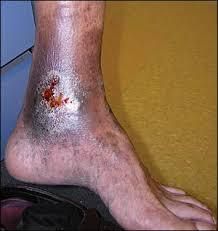The O’Connor Wound Care Center, which celebrates it’s 25th Anniversary this year, was the site of a ceremony on Thursday, June 18th 2019 honoring it with a Commendation from the City of San Jose. The honorable Sam Liccardo as well as all the City Council Members were involved in recognizing the O’Connor Wound Care Center for distinguished service to the citizens of San Jose. The plaque was presented by Council Member Dev Davis to Dr. Polly Kokinos of South Bay Vascular Center, who is the Medical Director of the O’Connor Wound Care Center, as well as to the entire staff of the Wound Care Center.
Chronic wounds are a silent epidemic in the United States affecting almost 7 million people. If not healed in a timely fashion, they can lead to loss of limb and life. The wound care center was started 25 years by Drs. Bruce Lehrman, Peter Schubart, and Jude Roussere, who are still active in it today. It is a testament to their vision and understanding that chronic wounds are best treated by a multidisciplinary approach and by a team that focuses on them. Their are 10 physicians from 6 different specialties all of whom are have special training in wound care, advanced treatment modalities for wounds, and hyperbaric oxygen therapy. Our team of twelve nurses and five additional staff members are committed to these patients, and several of them have worked at the center for decades. We follow published clinical practice guidelines to ensure the best outcomes and our wound healing rates are over 98%.
We are the only JHACO accredited center in the Bay Area, and are proud to offer advanced therapies such as skin substitutes, the LUNA laser system, and Hyperbaric Oxygen treatment for difficult to heal chronic wounds. We have treated and healed over 15,000 patients.
Should your patient need our expert help, please call us at 408-947-2804 for an appointment.
